
David and Kathy Jones have no regrets about moving their family from London to take on the 500-year-old Hele Cornmill almost 15 years ago. Credit: Viral PR
Hele Cornmill is 500-years-old this year and is one of the last working cornmills in England - current owners the Jones family have been celebrating the anniversary and looking back at their own time at the mill.
It all began 17 years ago on a family holiday in the Isle of Wight – standing at the foot of Bembridge windmill, David remarked to his wife Kathy, “I wouldn’t mind doing up an old mill.”
At the time, that throw away comment seemed innocuous enough but it led to a total life change in 2011 as the entire family – four children, pets and an elderly parent – uprooted from busy Isleworth, West London, to Devonshire.
Today the mill is an Ilfracombe tourist attraction and continues to grind wholemeal flour using the traditional mill stones and waterwheel.
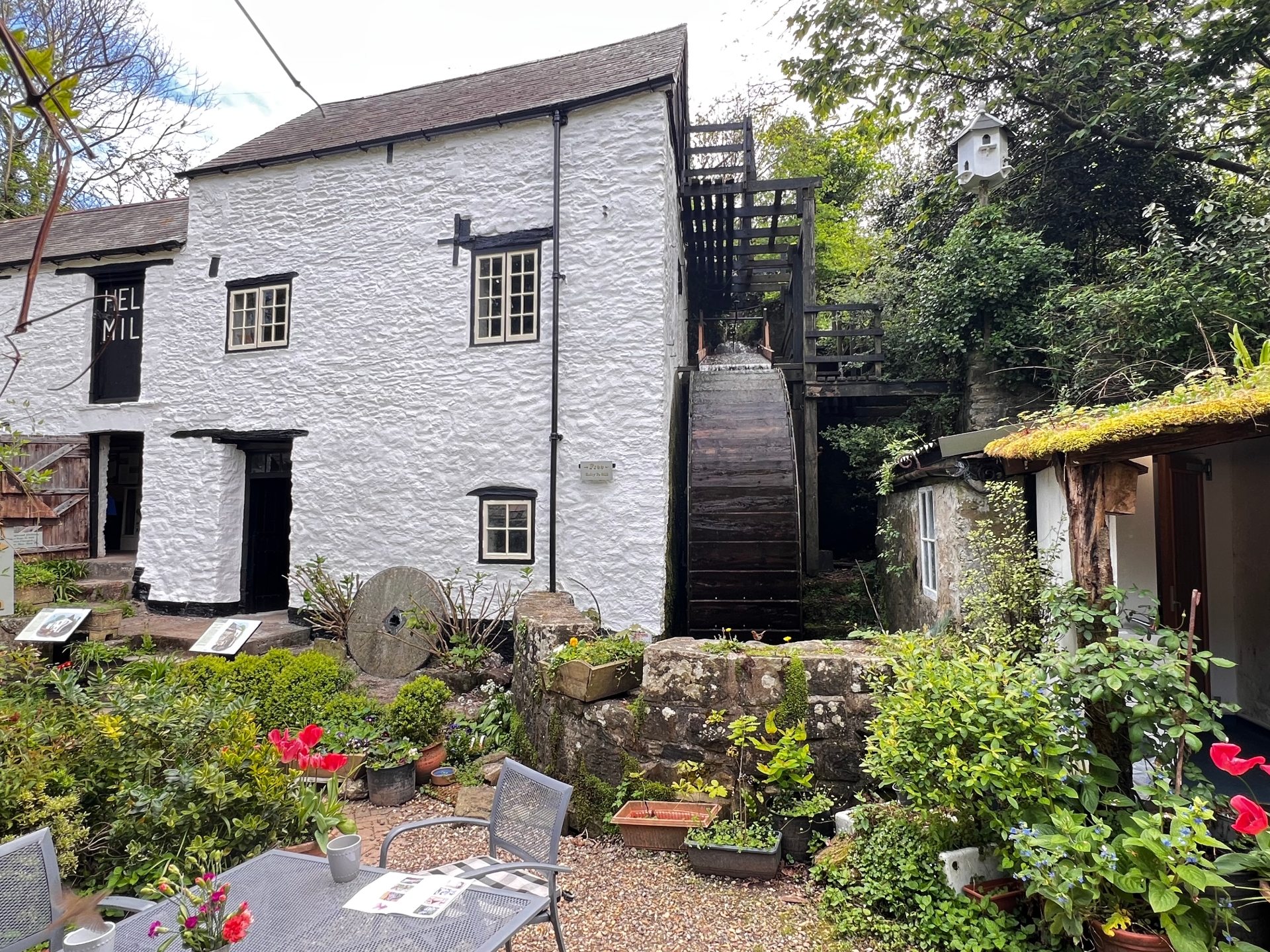
Above: Hele Cornmill is open through the summer season up to October and is one of the few places in England left where traditional milling is practiced using water power. Credit: David Jones
Unfortunately, where it once had three streams, it now has one, so milling is mostly reduced to the wettest months of February and March.
The Jones family grind flour while the sun doesn’t shine and stockpile it for Kathy’s creations for the idyllic mill tearoom, where everything but the white bread is baked by her using Hele mill flour.
_NEW-1756230765273.jpg)
Above and below: All the cakes and scones at Hele Cornmill are baked by Kathy Jones using flour ground at the mill. Credit: David Jones
_NEW-1756230719436.jpg)
The beginning was not plain sailing though, as Kathy recalled: “After a few failed starts in securing a mill (a nine-storey windmill in Norfolk, the second highest in England, slipped through our fingers) and having found an impatient buyer for our London home, we searched throughout England for a mill, either wind or water, which was both affordable and manageable.
“We stumbled across Hele Cornmill which ticked the boxes; it was working but needed some help, there was potential to develop the tearoom business, it was located close to good schools and it was still feasible (we thought) for David to travel back to London to his furniture business when needed.
“With four children; Ben, the eldest just dropped out of uni, Jennifer at Bath uni, Emily in year 9 about to make GCSE choices and Katie moving up to secondary school, it seemed the perfect timing.”
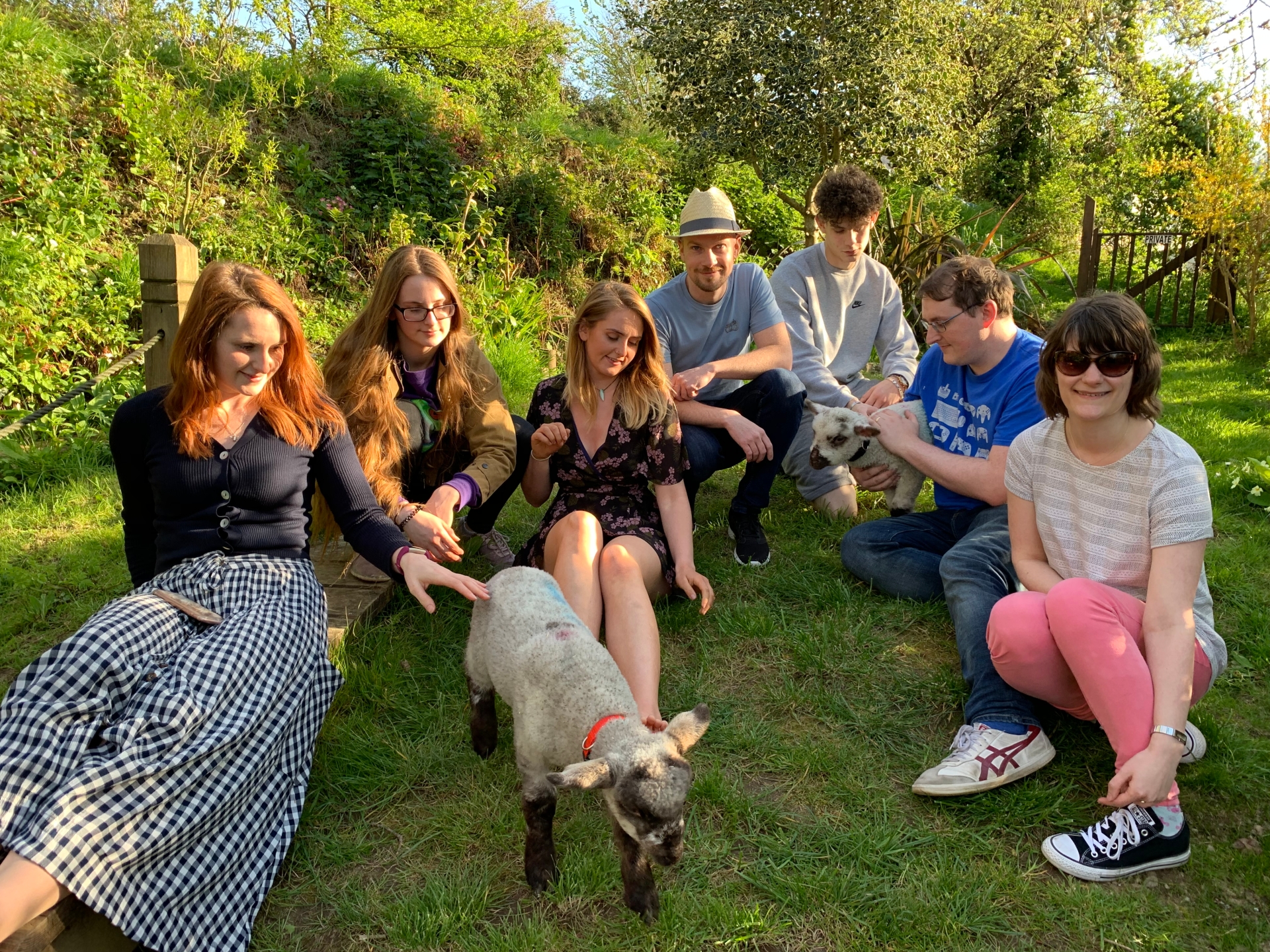
Above: The Jones family siblings and friends. Credit: David Jones
It was not the easiest of starts – David’s furniture business needed more of his time than first thought and he spent a lot of time on the M5, while Kathy’s elderly father was immediately taken into North Devon District Hospital on arrival and given days to live.
Kathy said: “He did in fact come back to live in our house and with the help of excellent carers, lived a further 18 months.
“As for the mill, we opened the tearoom the day after securing the sale. It was a totally new career for us, David being a furniture maker and myself having worked as a bilingual PA.”
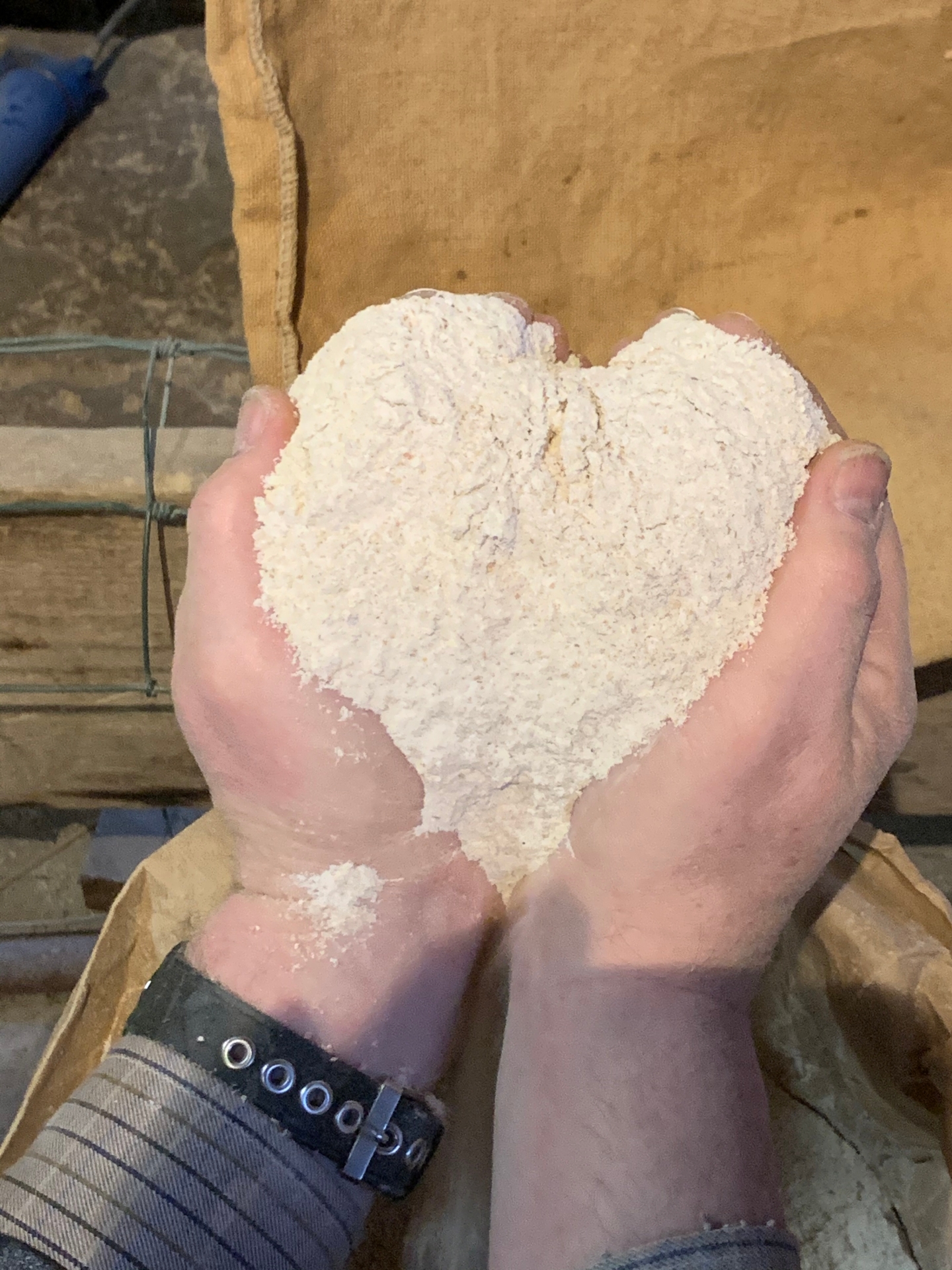
Above: Grinding flour the old fashioned way at Hele Cornmill is a labour of love. Credit: David Jones
Cake making has always been a family tradition but making scones was a different thing. Kathy said: “Jennifer and I spent an entire weekend trying out various recipes until we found ‘the one’.
“We entered some competitions and won the Best Tearoom award with Devon Life magazine so many times that we were banned from entering.
“We also appeared as a destination on Escape to the Country, which led to us being featured on This Morning with Lisa Faulkner and All Over the Place as well as filming with Shane Ritchie. All very exciting. We reckon that to date I have now made around 100,000 scones!”
When they arrived, the mill itself needed gentle maintenance, having been last restored by Chris Lovell in 1974-78. Chris took it on in a derelict state after it had ceased milling in 1961 when the then owner died.
Chris, a local engineer, made a very thorough job of repairing it and returned it to milling. During the Jones’ era, David has repaired the buckets of the 18-foot diameter waterwheel, mended the stone hoist, replaced the launder and repaired the roof.
Due to its Grade II Listed status, little could be done with the fabric of the building unless a heritage builder was employed, but this year David and Katie attended a free Heritage Skills course run by Petroc.
As a result, Katie took on the task of re-rendering and painting the mill building with traditional hot lime, with the new skills enabling the mill owners to be far more self-sustaining.
READ MORE: Hele Cornmill celebrates 500th anniversary by joining Ilfracombe Art Trail
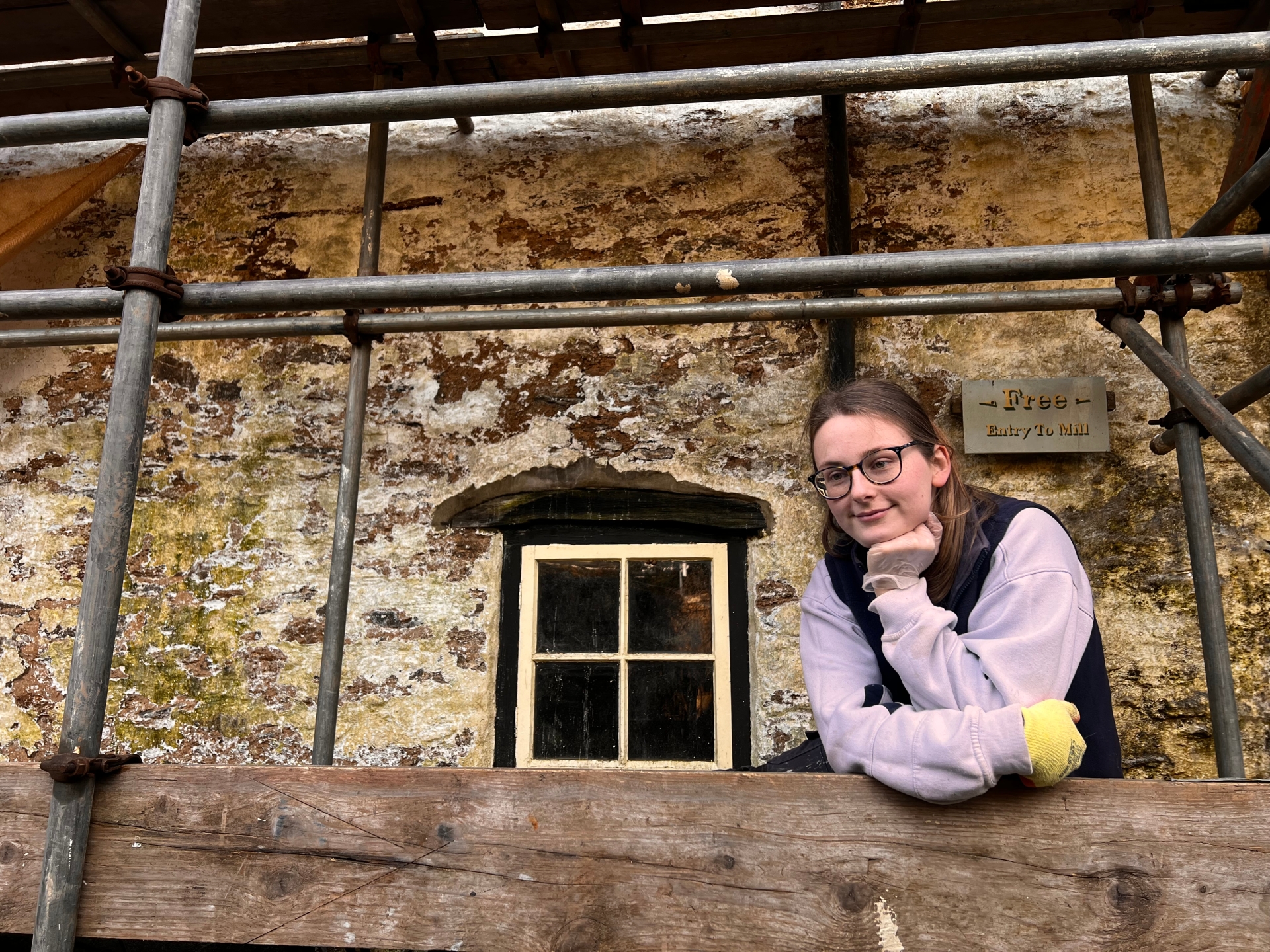
Above: Katie Jones has completely re-rendered the outside of the 500-year-old mill using heritage techniques and painted it with hot lime. Credit: David Jones
David said: “All of a sudden, we could do grand things with the mill, which were all within the keeping of the Grade II listed element, but produced some stunning results, which we wouldn't have got any other way.”
The initial move was more of a culture shock than either had realised, at first. David added: “The move down to here from London, which was always at high speed, I did struggle with at first, because I would be preparing for the day and I thought, ‘is this it?’ and it didn't have the same dynamism that you had up in London.
“But as time has gone by, I really do not want to go back to that, even if they gave me a house, I wouldn't go back.”
Kathy recalled: “It definitely is a slower pace of life down here. I remember going in the post office and standing behind someone who was having a chat and I was trying to get the kids to school and I found that quite frustrating.
“But after a while, you slow down and you become part of it as well. In the winter I love it down here when it's quiet and it's empty. In the summer, it's a bit hectic. We don't tend to go too far.”
Kathy in particular has enjoyed researching the history of Hele Cornmill and has uncovered more since they moved in. It was built by Lord Fitzwarren, 1st Earl of Bath, in 1525.
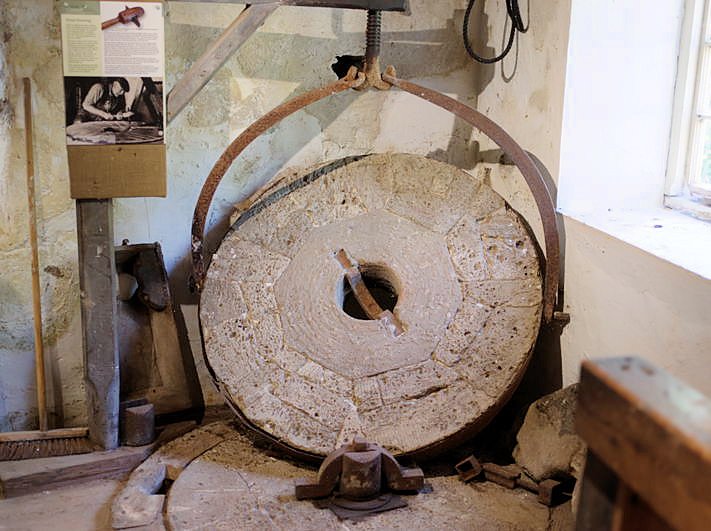
Above and below: The method of milling flour with ancient grindstones has not changed at Hele Cornmill for centuries and continues to this day – when the water is running! Credit: Simon Ellery
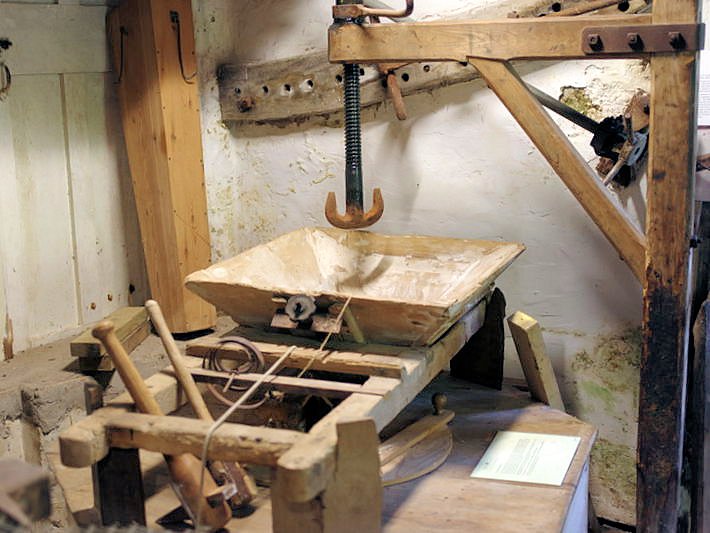
Over the years the Jones family have researched the mill’s history of ownership from records in Barnstaple, Exeter, Somerset as well as Manchester and Oxford.
They now have a record of mill owners and tenants back to 1525, although 1530-1664 is a bit sparse and also discovered the mill was owned by Mrs Gertrude Pyncombe at the time of her death in 1730.
This wealthy spinster set up a charity to support the clergy, churches and schools in Devon and the mill was on the inventory. It was eventually sold by the trust in 1917 and purchased by William Salway, a relative of John Hill who owned the mill from about 1840.
The family would particularly like to raise the mill’s profile, locally and nationally and would like to see more school parties visiting, as these are often a great success – any schools interested in finding out more are urged to get in touch.
This year they also received a Rural Enterprise Prosperity Fund grant which enabled them to put in disabled parking spaces and a more accessible pathway, as well as create additional information boards about the mill’s history.
-1756231176181.jpeg)
Above: Time for tea at Hele Cornmill. Credit: David Jones
Kathy said: “It's only in February and March, when there's been a lot of rain, that we have enough water to mill on the stones. So after Covid, we made a film, which shows us milling and the process of milling, so visitors can actually see the whole process of making the flour - we like to say that the cakes that we sell here are from mill to mouth.
“We're very excited the mill's been here for 500 years, we've now been here for 15 and we just want people to come and see what we've managed to discover and to come and learn about the history of the mill and see on the film how it works.”
David said they have no regrets, but as to the future: “There's always plans for the mill, but we have always got our eye in for what might be the next big adventure - but whether or not we're too old or wise to take on another, who knows?”
Hele Cornmill is open seasonally from April to October and you can find out more at https://www.helecornmill.com.
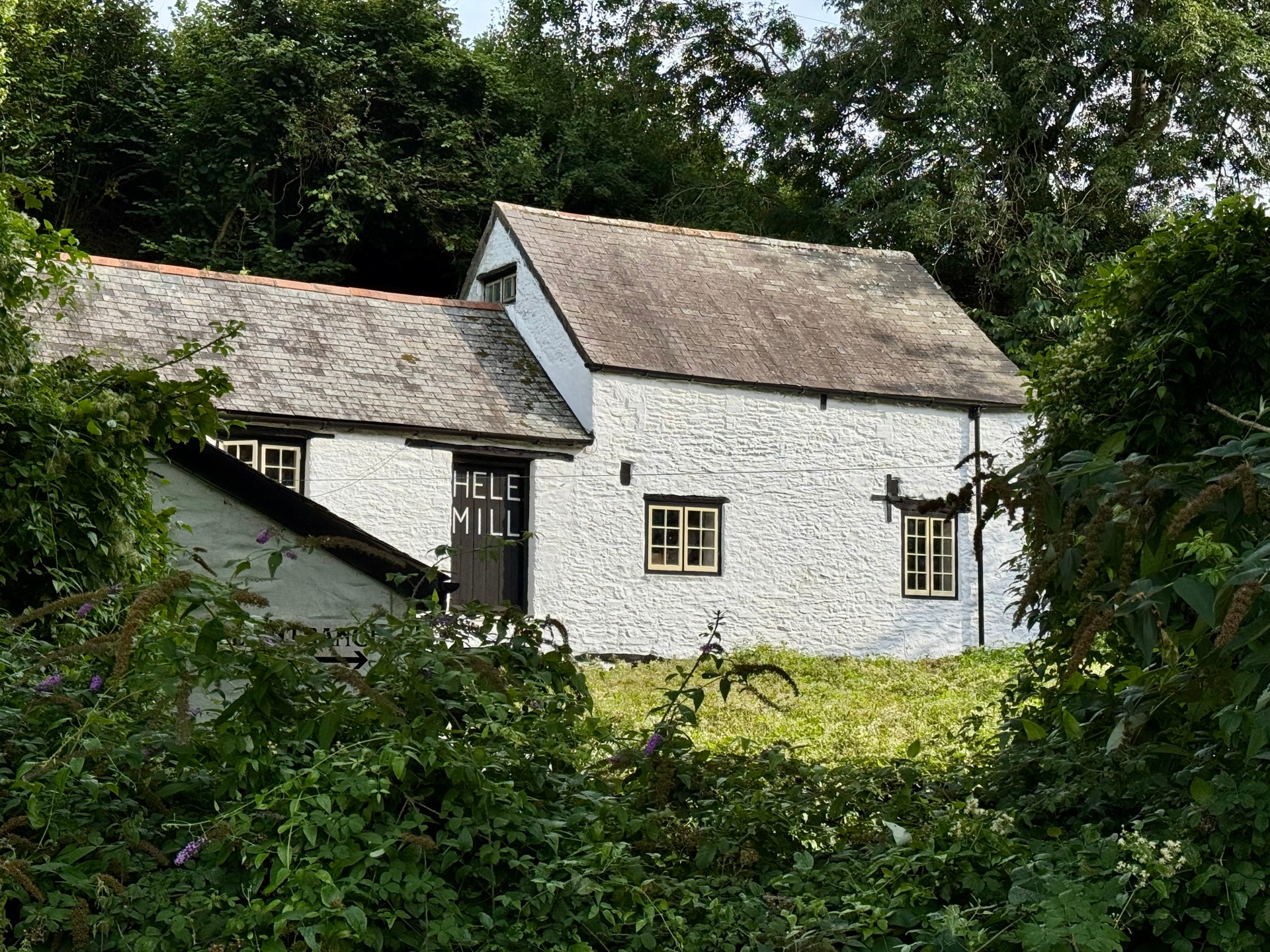
Subscribe or register today to discover more from DonegalLive.ie
Buy the e-paper of the Donegal Democrat, Donegal People's Press, Donegal Post and Inish Times here for instant access to Donegal's premier news titles.
Keep up with the latest news from Donegal with our daily newsletter featuring the most important stories of the day delivered to your inbox every evening at 5pm.